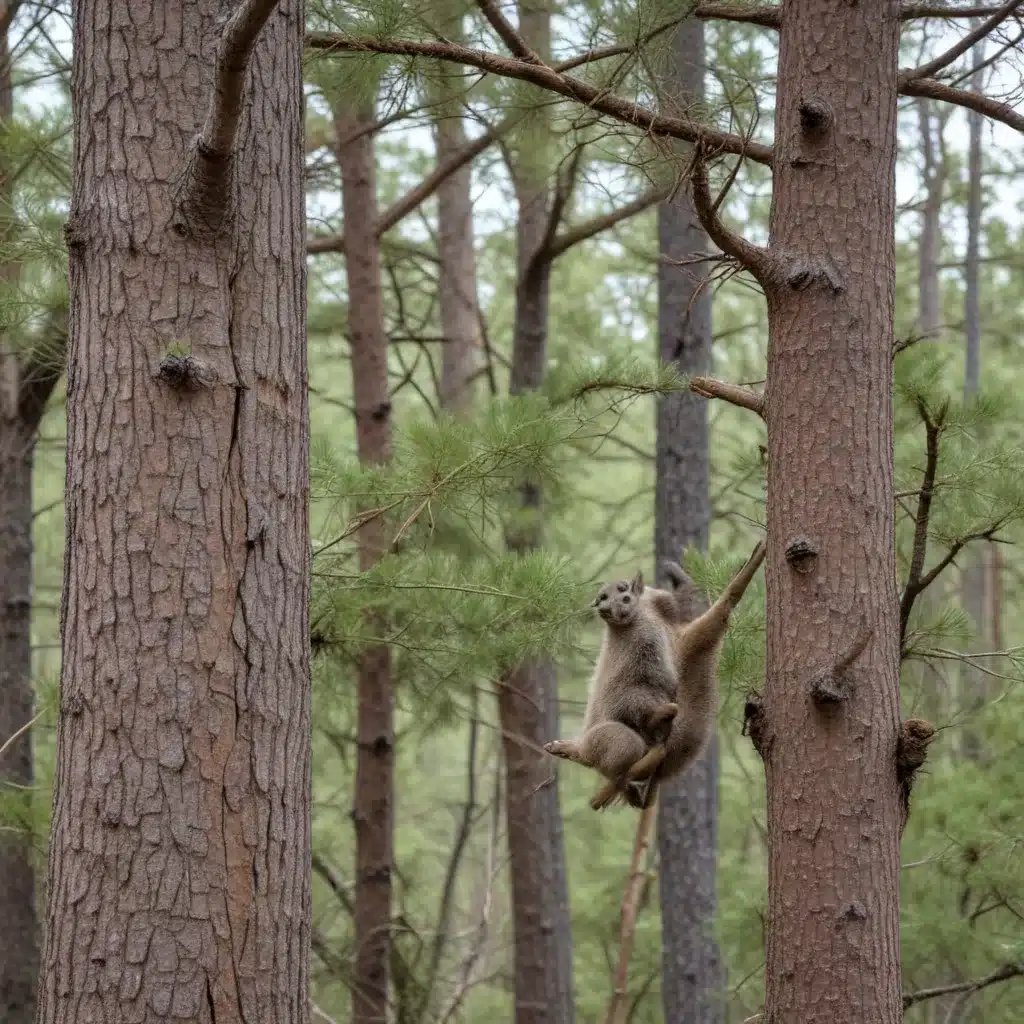
As a farm educator at Crooked Pines, I’m deeply passionate about farm nature exploration, nurturing wildlife, and connecting our community – young and old – to the wonders of the natural world. Here at Crooked Pines, we’re committed to protecting and preserving the diverse habitats that make our farm a thriving oasis for local flora and fauna.
Biodiversity and Ecosystem Services
Crooked Pines is home to an incredible array of plant and animal life. From the towering white pines that dot our landscape to the shy whitetail deer that wander through our fields, each species plays a vital role in maintaining the delicate balance of our ecosystem. Our mixed-hardwood forests, wetlands, and open meadows provide essential habitat for a wide range of creatures, from the buzzing pollinators that fertilize our crops to the majestic birds of prey that soar overhead.
These diverse habitats don’t just support wildlife – they also deliver invaluable ecosystem services that benefit our farm and community. Our wetlands filter and purify water, our forests regulate local climate, and our flowering plants attract beneficial insects that help control pests. By preserving these natural landscapes, we’re not only nurturing biodiversity, but also safeguarding the very resources that sustain our livelihoods and quality of life.
Habitat Fragmentation and Connectivity
One of the greatest threats to the wildlife at Crooked Pines is habitat fragmentation – the process by which large, contiguous natural areas are divided into smaller, isolated patches. As development encroaches on our region, it’s crucial that we work to maintain wildlife corridors that allow animals to move freely between these fragmented habitats.
That’s why we’ve partnered with the Western Foothills Land Trust and Sebago Clean Waters to protect the Crooked River watershed, a vital corridor that connects our farm to a network of conserved lands. By preserving this crucial artery, we’re ensuring that species like the iconic landlocked salmon and American eel can thrive, and that wide-ranging animals like black bear and bobcat can find the resources they need to survive and reproduce.
Climate Change Resilience
As the climate continues to shift, the habitats at Crooked Pines are becoming increasingly important refuges for wildlife. Our diverse ecosystems, with their mix of forest, wetland, and meadow, provide the structural complexity and microclimate variation that allow species to adapt to changing conditions.
For example, our older-growth forests offer cool, moist microclimates that could serve as critical climate refugia for sensitive species like the wood thrush and red-backed salamander. And our wetlands, which are fed by the Crooked River, help regulate local hydrology and moderate the impacts of droughts and floods.
By preserving and restoring these resilient habitats, we’re not only safeguarding the wildlife that call Crooked Pines home, but also preparing our farm to withstand the challenges of a changing climate.
Threatened and Endangered Species
Crooked Pines is a haven for several threatened and endangered species, including the monarch butterfly and the wood turtle. We work closely with state and federal agencies to monitor these populations and implement targeted conservation strategies.
For the monarchs, we’ve established extensive pollinator gardens filled with native milkweed and nectar-rich flowers to provide vital resources for these iconic butterflies during their long migration. And for the wood turtles, we’ve protected and restored the vernal pools and riparian areas that serve as critical breeding and foraging habitat.
By ensuring the survival of these keystone species, we’re supporting the overall health and resilience of our entire ecosystem.
Migratory Bird Patterns
Crooked Pines is a crucial stopover site for countless migratory birds, from the vibrant scarlet tanager to the melodic wood thrush. Each spring and fall, our forests, fields, and wetlands come alive with the sights and sounds of these avian travelers as they refuel and rest before continuing their journeys.
To support these migratory species, we’ve established a network of bird-friendly landscaping, featuring native plants that provide abundant food and shelter. We also monitor and manage our habitats to ensure they offer the diverse resources and undisturbed resting areas that these birds require.
Community Engagement and Education
At Crooked Pines, we believe that engaging our community, especially our youngest members, is essential for the long-term protection and stewardship of our natural landscapes. That’s why we offer a wide range of educational programs and hands-on activities that inspire wonder, foster understanding, and empower folks of all ages to become active conservationists.
From nature exploration hikes that introduce kids to the wonders of our local ecosystems, to gardening workshops that teach families how to create wildlife-friendly habitats at home, we’re dedicated to cultivating a deep appreciation for the natural world. And by sharing our stories, our challenges, and our successes, we hope to inspire others to join us in our mission to safeguard the future of Crooked Pines.
Conclusion
As a farm educator, I’m endlessly fascinated by the complex web of life that thrives at Crooked Pines. From the towering white pines that anchor our forests to the tiniest pollinators that dance among our flowering plants, each species plays a vital role in sustaining the health and resilience of our entire ecosystem.
By protecting and preserving these diverse habitats, we’re not only safeguarding the wildlife that call Crooked Pines home, but also ensuring the long-term viability of our farm and the wellbeing of our community. It’s a responsibility we take seriously, and one that we’re honored to share with all who visit our little slice of nature’s wonder. So come explore with us, and discover the magic that awaits within the landscapes of Crooked Pines.


